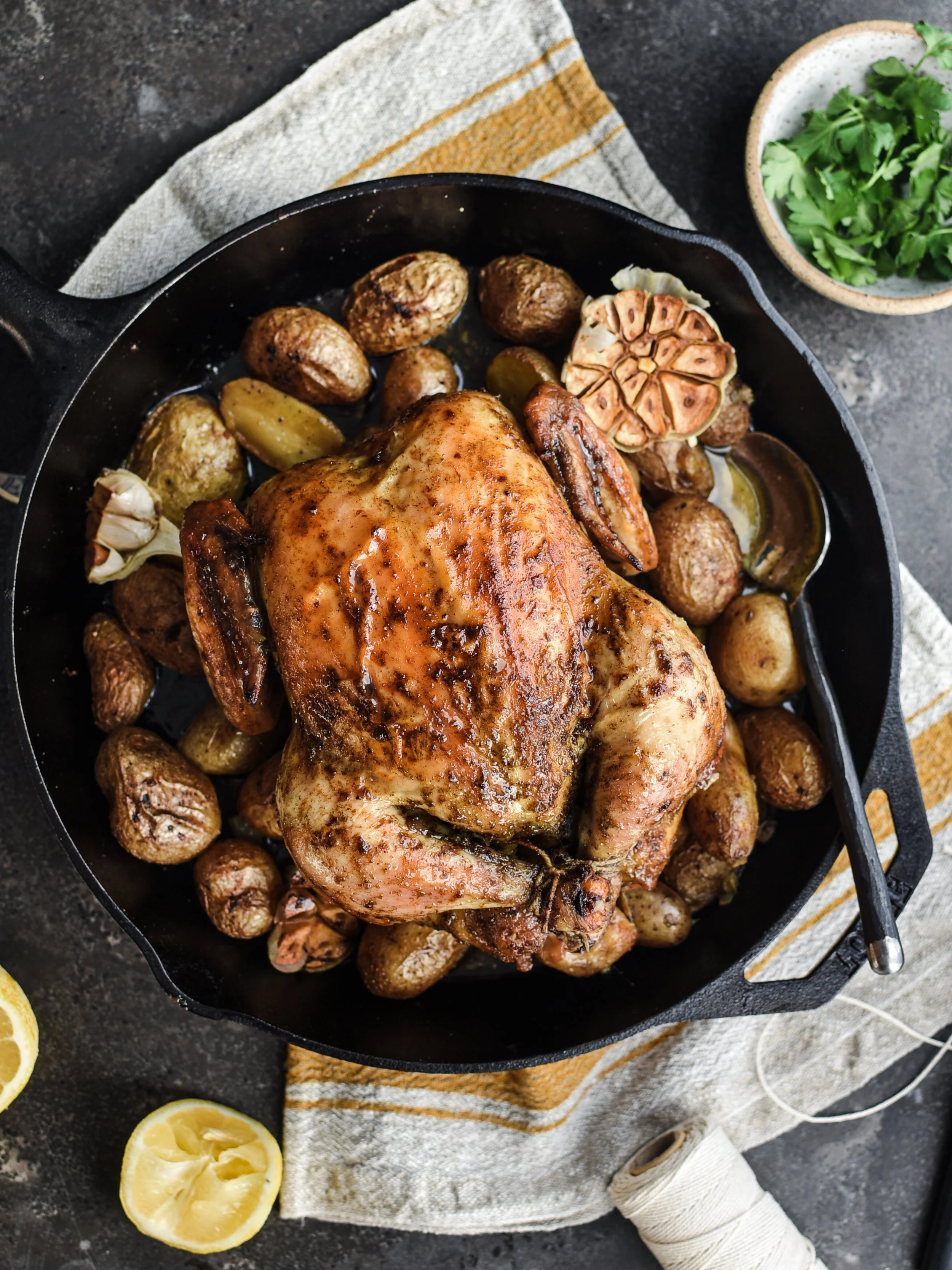Low-and-Slow Roast Chicken
When a chilly evening or a lazy Sunday affords you a little more time, try this low-and-slow roast chicken. Although you can cook a chicken in less time, cooking it at a low oven temperature for a longer period of time gives you a meltingly tender, shreddable bird that tastes like it’s fresh off the rotisserie. The collagen in the chicken breaks down, and the fat in the skin gently renders, basting the potatoes below until they’re buttery and soft. I like to squeeze the roasted garlic into the potatoes and toss them in the chicken juices with a bit of lemon and some chopped parsley just before serving. Serve this chicken with a simple green salad or some crisp watercress tossed in a mustardy vinaigrette for a true French experience.
Serves 4
1 lemon, plus lemon wedges for serving
1 Tablespoon brown sugar
2 teaspoons dried sage
Kosher salt and freshly ground black pepper
4½ Tablespoons olive oil
One 4- to 5-pound whole chicken
1 head of garlic, halved crosswise
2 pounds baby Yukon gold or fingerling potatoes, halved if large
2 Tablespoons chopped Italian parsley
Flaky sea salt, for sprinkling
1. Preheat the oven to 300°F.
2. In a small bowl, zest the lemon. Add the brown sugar, sage, 1 tablespoon salt, ½ teaspoon pepper, and 3 tablespoons of the olive oil. Mix to combine. Rub the mixture all over the chicken, inside and out. Cut the zested lemon in half and tuck it inside your bird. Tie the legs together with kitchen string.
3. In a 12-inch cast-iron skillet or 9-by-13-inch baking dish, toss the potatoes with the remaining 1½ tablespoons of olive oil. Season with salt and pepper. Spread in an even layer and then tuck the halved garlic into the potatoes. Set the chicken on top.
4. Roast the chicken, basting every hour with the accumulated juices, until the skin is browned, the meat is extremely tender, and a meat thermometer inserted in the thickest part of the thigh registers 180°F, about 2½ to 3 hours. (Note: Yes, this is higher than your standard internal temperature for chicken, but don’t be alarmed! After cooking at a low steady temperature, the chicken will be tender and juicy and the collagen will have melted and turned to gelatin.) Transfer the chicken to a cutting board and let rest at least 10 minutes before carving.
5. If desired, while the chicken is resting, turn the broiler to high and position a rack 4 inches from the heat. Crisp the potatoes under the broiler until they’re beginning to brown, 2 to 3 minutes. Remove from the oven and let cool slightly. Squeeze the roasted garlic into the potatoes and finish with a little more lemon juice. Add the parsley and toss the potatoes until they are nicely coated in the pan juices.
6. Spoon the potatoes onto a serving platter. Carve the chicken and arrange on top. Drizzle with any pan juices and serve with lemon wedges, if desired.
RECIPE NOTES:
As the chicken cooks, it will release juices that you can use to baste the bird. Make sure that your oven is set to regular bake and NOT convection. Convection cooking will dry up all of the juices in the pan and give you a dryer bird as an end result.
Also, consistent oven temperature is key to this recipe. If you worry that your oven runs hot, then lower the temp accordingly. I like to use an inexpensive backup thermometer like this one (you can also find one in your grocery store) just to be sure the oven is calibrated correctly.

